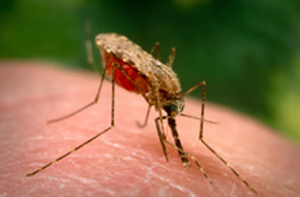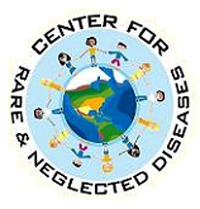
A team of researchers led by Kasturi Haldar and Souvik Bhattacharjee of the University of Notre Dame’s Center for Rare and Neglected Diseases has made a fundamental discovery in understanding how malaria parasites cause deadly disease.
The researchers show how parasites target proteins to the surface of the red blood cell that enables sticking to and blocking blood vessels. Strategies that prevent this host-targeting process will block disease.
The research findings appear in the Jan. 20 edition of the journal Cell, the leading journal in the life sciences. The study was supported by the National Institutes of Health.
Malaria is a blood disease that kills nearly 1 million people each year. It is caused by a parasite that infects red cells in the blood. Once inside the cell, the parasite exports proteins beyond its own plasma membrane border into the blood cell. These proteins function as adhesins that help the infected red blood cells stick to the walls of blood vessels in the brain and cause cerebral malaria, a deadly form of the disease that kills over half a million children each year.

In all cells, proteins are made in a specialized cell compartment called the endoplasmic reticulum (ER) from where they are delivered to other parts of the cell. Haldar and Bhattacharjee and collaborators Robert Stahelin at the Indiana University School of Medicine-South Bend (who also is an adjunct faculty member in Notre Dame’s Department of Chemistry and Biochemistry), and David and Kaye Speicher at the Wistar Institute discovered that for host-targeted malaria proteins the very first step is binding to the lipid phosphatidylinositol 3-phosphate, PIP, in the ER.
This was surprising for two reasons. Previous studies suggested an enzyme called Plasmepsin V that released the proteins into the ER was also the export mechanism. However, Haldar, Bhattacharjee and colleagues discovered that binding to PIP lipid which occurs first is the gate keeper to control export and that export can occur without Plasmepsin V action. Further, in higher eukaryotic cells (such as in humans), the lipid PIP is not usually found within the ER membrane but rather is exposed to the cellular cytoplasm.
Haldar and Bhattacharjee are experts in malaria parasite biology and pathogenesis. Stahelin is an expert in PIP lipid biology, and David and Kaye Speicher are experts in proteomics and a method called mass spectrometry.
Their interdisciplinary collaboration reveals a fundamental, novel cellular function, whose disruption can provide new therapies that are urgently needed for malaria.
Contact: Kasturi Haldar, khaldar@nd.edu